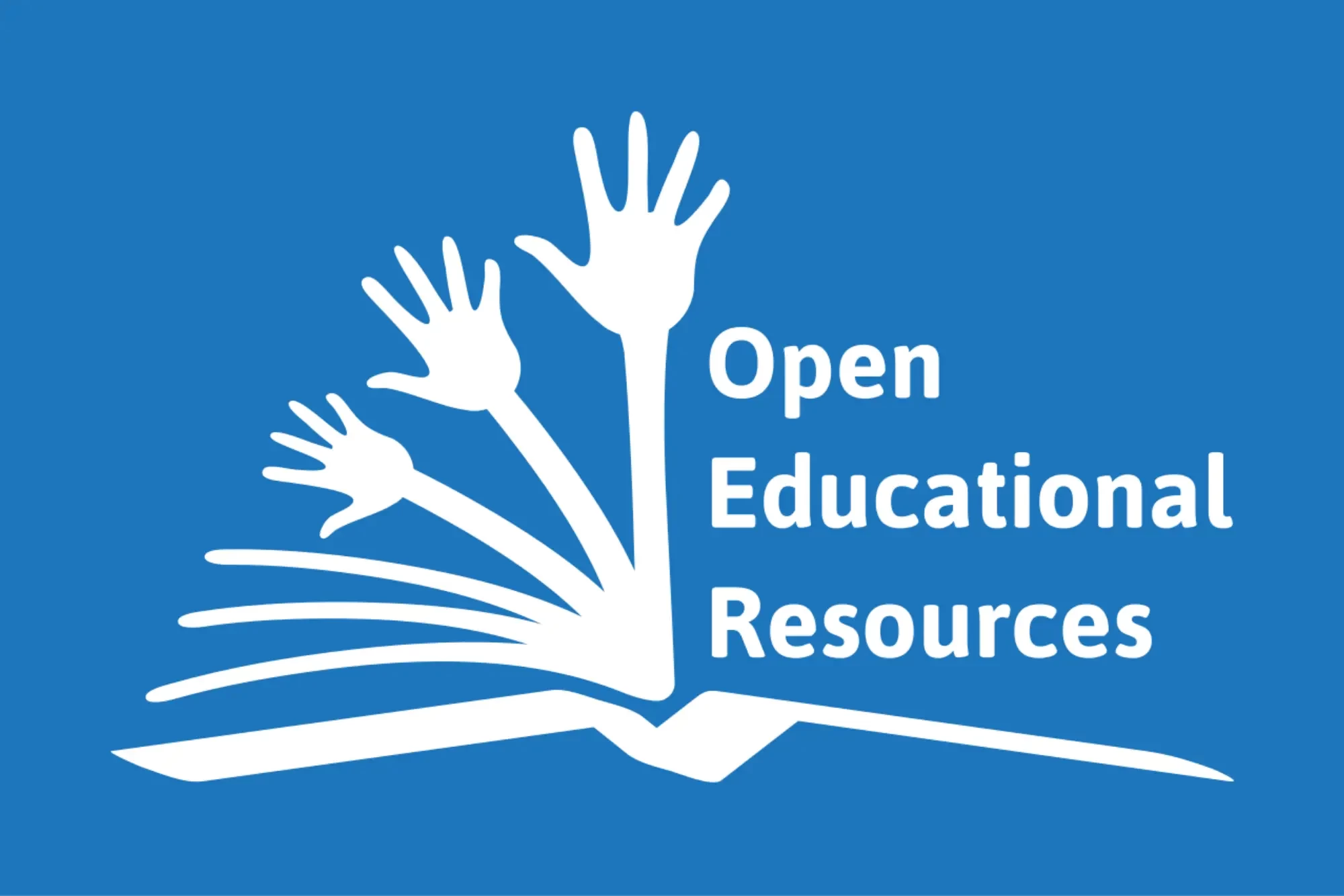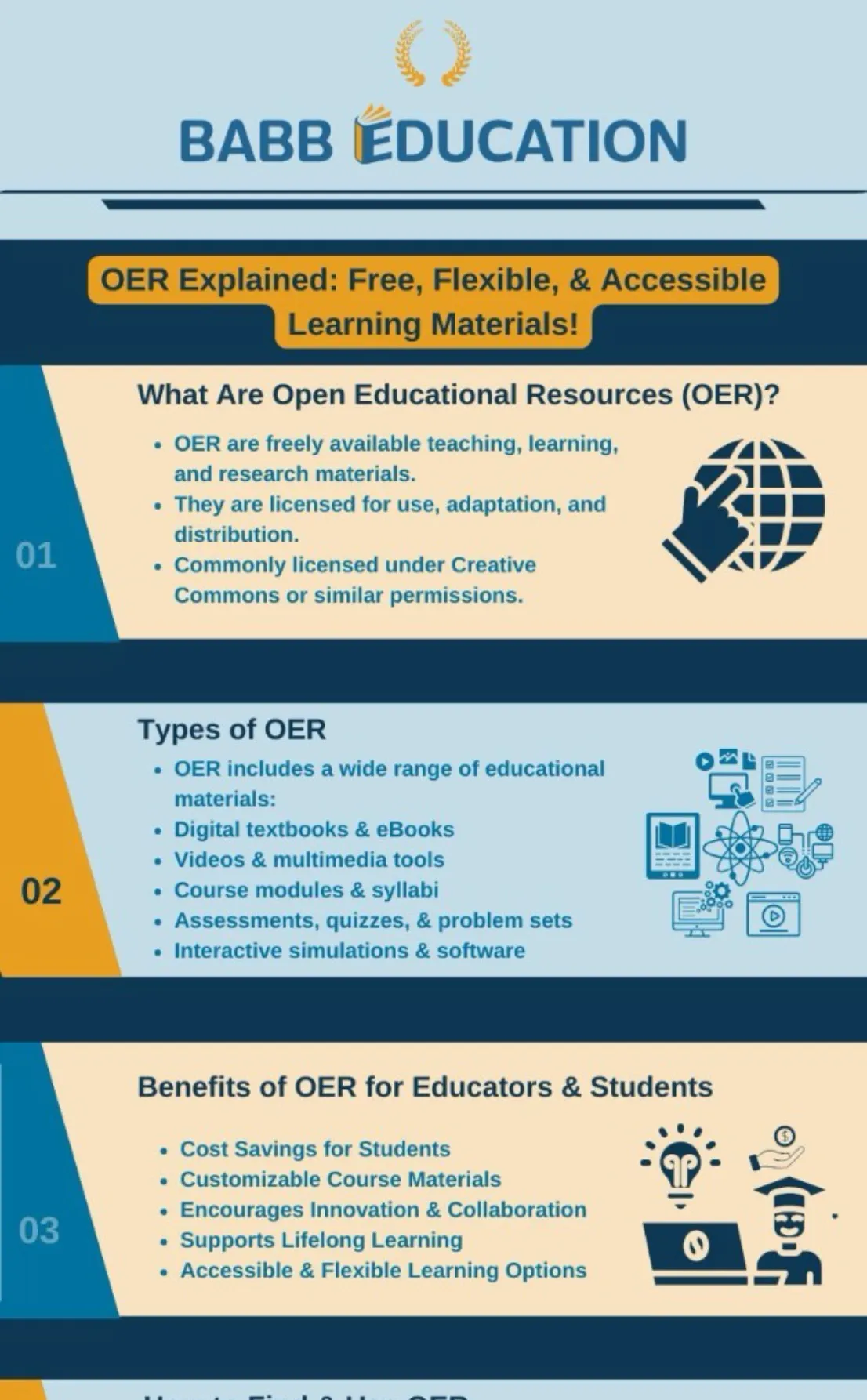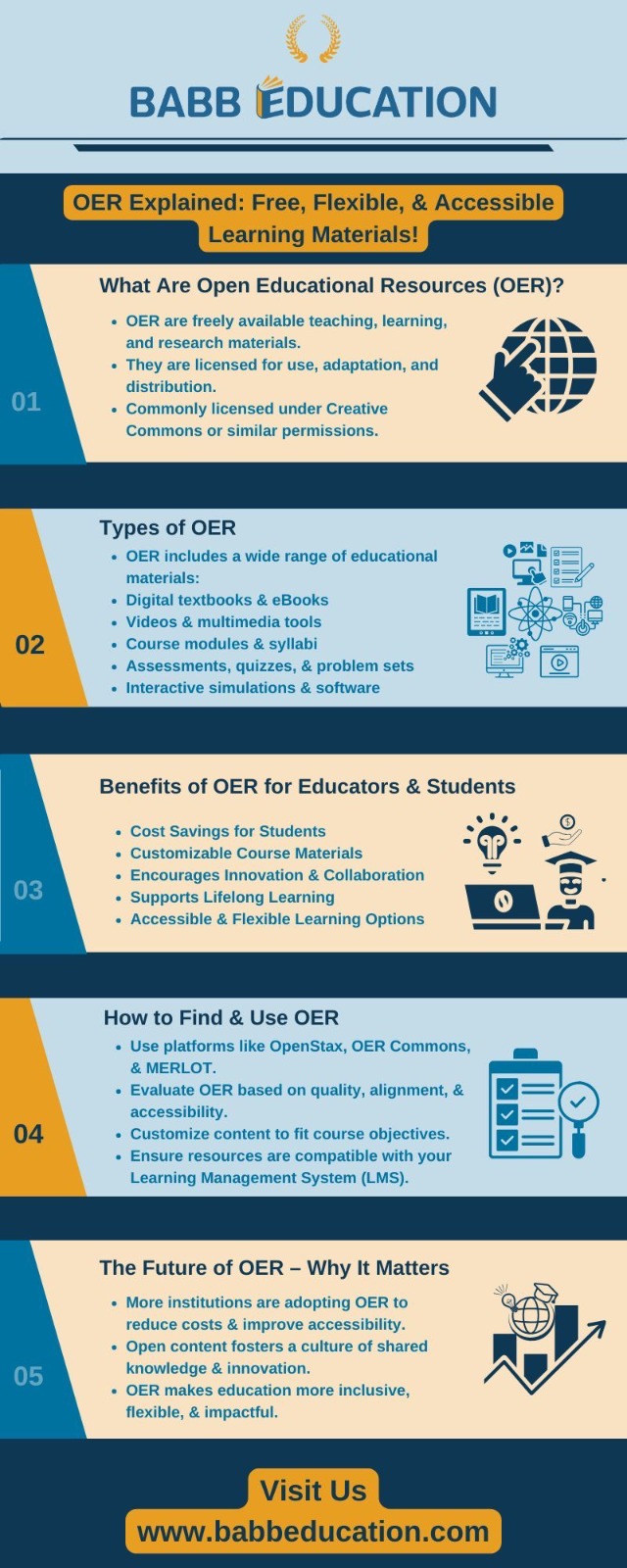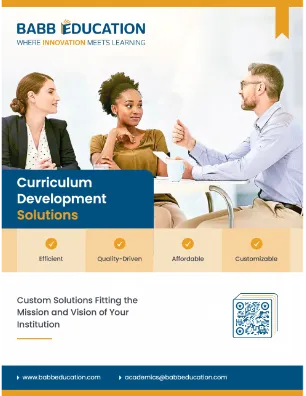What Are Open Educational Resources (OER)?
OER are teaching, learning, and research materials that are freely available for use, adaptation, and distribution. Typically licensed under Creative Commons or similar permissions, OER can include a wide range of materials such as:
- digital textbooks.
- videos and multimedia tools.
- course modules and syllabi.
- assessments and problem sets.
- interactive simulations and software.
Unlike traditional proprietary course materials, OER allows educators to customize content to better suit their students’ needs and learning outcomes. This open licensing also encourages collaboration among educators, fostering a global community of shared knowledge.
OER Infographic
This infographic explains what OER is, types and benefits of OER, how to find and use OER and the future of OER.
Benefits of Incorporating OER
- Cost Savings for Students
One of the most compelling advantages of OER is its ability to significantly reduce financial barriers for students. The high cost of traditional textbooks can deter students from purchasing required materials, negatively impacting their performance. By providing free and accessible resources, educators can ensure that all students have the tools they need to succeed from day one.
- Improved Accessibility
Open resources are often created with accessibility in mind, making them more inclusive for students with disabilities. Many OER offer features such as screen reader compatibility, alt text for images, and multiple file formats. Their digital nature also ensures they are available anytime, anywhere, supporting flexible and accessible learning environments.
- Encouraging Innovation and Collaboration
By sharing and adapting OER, educators can collaborate across institutions and disciplines, leading to innovative teaching practices. This collaborative approach encourages the development of high-quality resources and fosters a culture of continuous improvement in education.
- Supporting Lifelong Learning
The open-access nature of OER benefits not only enrolled students but also lifelong learners. Alumni and community members can leverage OER for ongoing education and skill development, broadening the reach and impact of higher education institutions.
Strategies for Integrating OER into Course Content
- Identify High-Quality OER
The first step in utilizing OER is to find reputable and high-quality resources. Websites like OER Commons, OpenStax, and MERLOT provide extensive libraries of vetted materials across various disciplines. When selecting OER, evaluate them for:
- alignment with course objectives.
- academic rigor and accuracy.
- accessibility features.
- ease of adaptation.
- Supplement Traditional Materials with OER
You don’t need to replace all your course materials with OER right away. Begin by integrating OER into specific sections of your course, such as supplementary readings, videos, or interactive simulations; this approach allows you to test the effectiveness of OER while maintaining the familiarity of traditional resources.
- Engage Students with Multimedia and Interactivity
OER often includes rich multimedia and interactive components that can enhance engagement and understanding. Incorporate simulations, videos, and quizzes to create a more dynamic and immersive learning experience. For example, platforms like PhET Interactive Simulations offer science and math tools that bring abstract concepts to life.
- Foster a Collaborative Learning Environment
Encourage students to actively engage with OER by assigning them tasks like curating additional resources, creating summaries, or even contributing to the development of open content. This participatory approach not only deepens their understanding but also builds skills in research and collaboration.
- Ensure Accessibility and Usability
When adopting OER, prioritize materials that are accessible to all learners. Test resources for compatibility with assistive technologies and provide content in multiple formats, such as PDFs, Word documents, and HTML. Additionally, ensure that your Learning Management System (LMS) integrates well with the chosen OER.
Overcoming Challenges in OER Implementation
While the benefits of OER are substantial, adopting them comes with challenges. Educators may face issues such as the time required to locate and evaluate high-quality resources, limited availability of OER in certain subject areas, and the need for professional development to effectively use these materials. This is where partnering with Babb Education makes sense!
Case Studies: Success Stories in OER Adoption
Babb Education’s instructional designers have worked with many institutions to successfully integrate OER into their courses, demonstrating its transformative impact. For example, one client initiative offers students the option to complete an associate degree program without purchasing any textbooks, relying entirely on OER. This program has significantly reduced costs for students while maintaining high academic standards.
Another client incorporated OER across various disciplines, reporting increased student satisfaction and engagement. Faculty members have praised the flexibility and adaptability of OER because it enables them to create more relevant and impactful learning experiences.
By incorporating free and openly licensed materials, we can help you reduce costs, enrich learning experiences, and foster innovation in the classroom. While challenges exist, the benefits of OER far outweigh the obstacles, offering a path toward more equitable and inclusive education. Contact Babb Education today to learn how we can partner with you to utilize Open Educational Resources (OER) - a powerful way to enhance course content, improve accessibility, and support student success!





